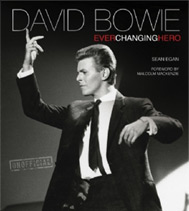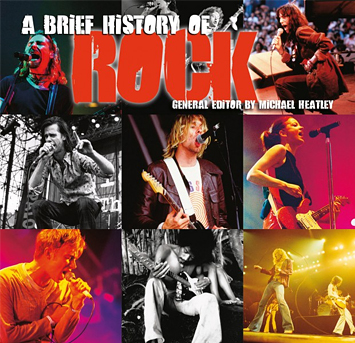just don’t work very well, either for musical reasons or because of the sheer practicality of getting particular instruments and players together in the first place. Why do Musical Ensembles Form ? Ensembles can develop instinctively. When someone in a group of people starts singing or sounding a rhythm, it is often a natural reaction for the others in ...
The bagpipe consists of drones, or reedpipes, which are connected to a windbag. The windbag is held under the arm and is squeezed by the elbow to pass air into the pipes. The windbag is inflated by a blowpipe or bellows, and the melody is played by means of a chanter, a pipe with fingerholes. Although the ...
portative organs. ‘Haut’, or ‘loud’ instruments were used outdoors, often for processions and outdoor dancing, and included shawms, trombones and slide trumpets. Beyond this loose arrangement, ensembles were formed freely, often just using whatever instruments happened to be available. A much clearer pattern emerges from the Renaissance period (1450–1600) onwards. The Renaissance style was based on ...
shrill bombarde with the bagpipe biniou, in which the bagpipe sustains the tune as the bombarde player takes a breath. Some of the more oboe-like shawms are played in ensembles of different sizes. The sopila of Istria and the nearby island of Krk on the Adriatic exists in two sizes, both unkeyed, that play intertwining lines. Crucial to ...
Some o-daiko are so large that they are not often moved and are housed in a temple or shrine. These drums have become popular in the West through touring taiko ensembles (kumi-daiko) which combine ritualistic displays of martial-arts strength and stamina with drumming expertise. Korean Drums The changgo (30 cm/12 in diameter and 60 cm/24 in long) is a double-headed hourglass ...
Drums are an essential part of urban music, classical ensembles, sacred Sufi music, and traditional folk music throughout the Middle East. Dumbek, Tar and Riq The dumbek is a goblet drum (10–22 cm/4–9 in diameter and 22–40 cm/9–16 in long). It has a hollow pottery, wood or metal body and a goatskin or fish-skin head. There ...
with wooden strips bound by metal (like the ashiko). The multilayered polyrhythmic music of West African drumming is constructed from interlocking patterns of rhythms and includes singing and dancing. Drum Ensembles Drum ensembles utilize a range of different sonorities, and drummers use various playing techniques with sticks and hands to achieve different sounds. Drum ensembles usually also include an agogo ...
variants of tambura, which has a teardrop or spoon-shaped body with a shallower bowl-back than the tanbur. They come in a range of sizes, particularly among the tambura ensembles of the former Yugoslav states, where most have escalated from two strings to five. The series of Croatian tamburas, apart from the smallest, are guitar-shaped – a ...
The lyre has a distinguished history. It was the instrument used by the Greeks to accompany plays and recitations. Greek mythology tells us that the lyre was created by Hermes, the son of Zeus, from a tortoise shell. Singing to the accompaniment of the lyre was thought to promote a sense of justice. Construction The lyre is formed of ...
The oboe was developed in the mid-seventeenth century and the credit is usually given to Jean Hotteterre (c. 1605–90/2), a shawm player at the court of Louis XIV. Its immediate predecessor was the shawm and the oboe took over the French name for smaller shawms, hautbois or ‘loud woodwind instrument’. The distribution of the finger holes and the bore was ...
Slit drums, or log drums, are found in many pre-industrialized cultures in Africa, Australasia, Central and South America, and the Far East. They are formed by hollowing a block of wood through a lengthwise slit, and are sounded by the players’ stamping feet or by being beaten with sticks. Slit drums are really idiophones as ...
The resulting Composition for Synthesizer (1961) was Babbitt’s first fully synthesized work. It was followed in the same year by Vision and Prayer for soprano and synthesizer, and then Ensembles for Synthesizer (1962–64). Babbitt appreciated the accuracy which the instrument offered: changes of dynamics on both single and consecutive pitches could be not merely requested of the performers in a ...
The context in which the trumpet was played – solo and in trumpet ensembles – did not alter greatly in the Renaissance. Meanwhile, its compass expanded upwards. Then in the Baroque period, the bell throat became progressively narrower and, like the horn, it was provided by makers with purpose-built extra lengths of tubing. These could be fitted ...
were combined to create a homogeneous ensemble. Initially this was applied to shawm, flutes and recorders, but the first decade of the sixteenth century saw the first fiddle ensembles develop: the violin family was born. Violin versus Viol To begin with, the violin was less popular than its cousin the viol. Although similar techniques were used to perform ...
, Felix Mendelssohn (1809–47) wrote an overture for Harmonie, op. 24 (1824), it was for no fewer than 23 winds plus percussion. Because of their carrying power, wind ensembles are able to play successfully out of doors or in a noisy environment, something which has helped the development of military bands (there are no traditions of military string ...
AUTHORITATIVE
An extensive music information resource, bringing together the talents and expertise of a wide range of editors and musicologists, including Stanley Sadie, Charles Wilson, Paul Du Noyer, Tony Byworth, Bob Allen, Howard Mandel, Cliff Douse, William Schafer, John Wilson...
CURATED
Classical, Rock, Blues, Jazz, Country and more. Flame Tree has been making encyclopaedias and guides about music for over 20 years. Now Flame Tree Pro brings together a huge canon of carefully curated information on genres, styles, artists and instruments. It's a perfect tool for study, and entertaining too, a great companion to our music books.

David Bowie
Fantastic new, unofficial biography covers
his life, music, art and movies, with a
sweep of incredible photographs.


